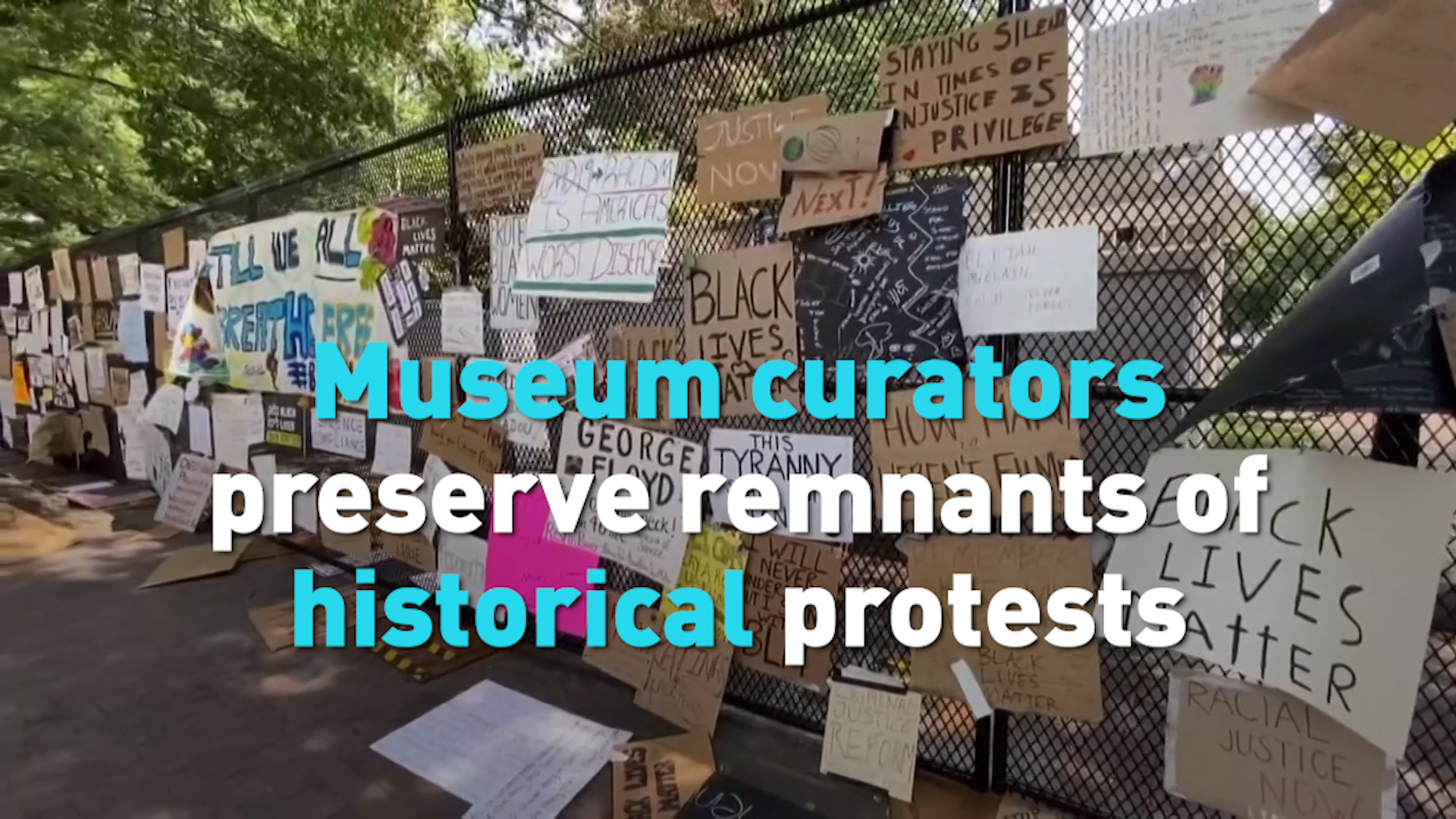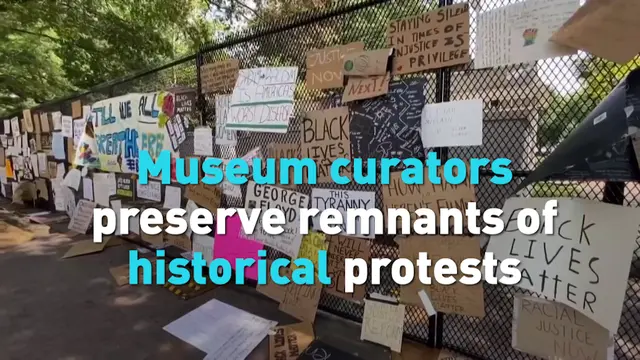02:23

Museums are curating remnants of the broad anti-racism protests after George Floyd was killed by Minneapolis police Officer, as a memory and a wake up call for the future.
Melanie A. Adams, Director of Anacostia Community Museum says the protests are a broad movement. "Museums capture a moment in time and capture a history. It's broader than George Floyd. I think he was definitely one of the impetus for the movement to happen. I think we're really telling that larger story of inequality in America."
Museums are collecting sign board, caps, masks, while also speaking with individuals. "The other way we've been collecting is really through moments of resilience, which is an online collecting initiative that we started actually as part of the pandemic. We started that to begin collecting stories around the pandemic and how people are coming together during this time and being resilient. And then the protests and demonstrations happened," says Ms. Adams. "So we've added that to moments of resilience and we have started to get a few stories on how people around the country are responding to what's happening, not only with George Floyd, but with other African-American people who've experienced police violence."
But with the availability of social media and widespread technology, Curators are also collecting memories through images, videos or just a story.
Ms. Adams aims this preservation will help mark history. "George Floyd was the impetus for this. I think we're really telling that larger story of inequality in America. How can we illuminate the stories of usually those people who are left out of the history books and really tell the stories of the day to day lives of individuals on both their struggles and their triumphs. And so by working to tell the story to the people that are demonstrating in the street or even just surviving it, it's really important for us to have those stories of everyday people."
"George Floyd is yet another example for African American racism in this country and beyond. But the work at the museum has been doing is encompassing the larger issues. Police violence against African-Americans happen on a regular basis in this country."
 简体中文
简体中文



